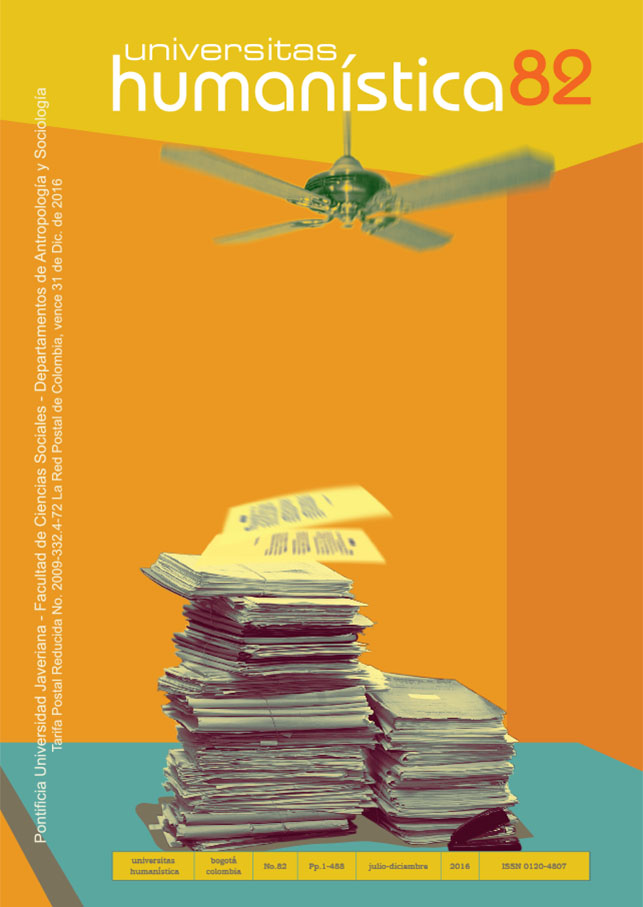Abstract
This article aims to reflect on the judicial bureaucracy from a point of view focused on the interaction between people and objects. In other words, we aim to contribute to the understanding of the configuration of the State from the different links between objects (files) and people (officers and citizens). For this purpose, the article is divided in three sections. The first section makes a bibliographical balance of the way (form) in which how courts and files have been researched in and outside the country. Then we have the ethnographic description of the office, explaining the positions and functions of the employees, and the cycle that files go through in them. Finally, we carry out a theoretical reflection on the materiality of justice based on ethnographical data.

This journal provides immediate open access to its content on the principle that making research freely available to the public, encourages greater global exchange of knowledge.
The journal Universitas Humanística is registered under a Creative Commons Attribution 4.0 International Public License. Thus, this work may be reproduced, distributed, and publicly shared in digital format, as long as the names of the authors and Pontificia Universidad Javeriana are acknowledged. Others are allowed to quote, adapt, transform, auto-archive, republish, and create based on this material, for any purpose (even commercial ones), provided the authorship is duly acknowledged, a link to the original work is provided, and it is specified if changes have been made. Pontificia Universidad Javeriana does not hold the rights of published works and the authors are solely responsible for the contents of their works; they keep the moral, intellectual, privacy, and publicity rights.
Approving the intervention of the work (review, copy-editing, translation, layout) and the following outreach, are granted through an use license and not through an assignment of rights. This means the journal and Pontificia Universidad Javeriana cannot be held responsible for any ethical malpractice by the authors. As a consequence of the protection granted by the use license, the journal is not required to publish recantations or modify information already published, unless the errata stems from the editorial management process. Publishing contents in this journal does not generate royalties for contributors.


